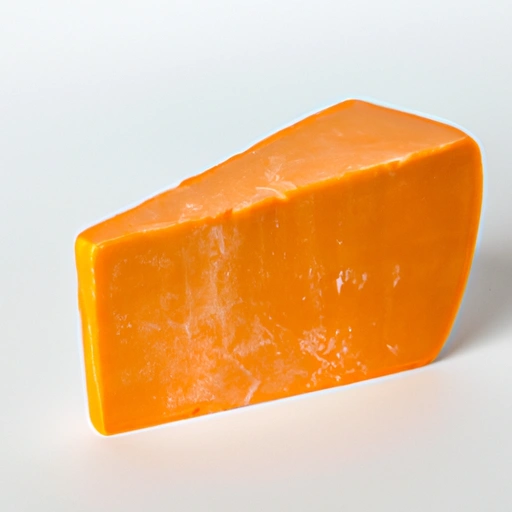Cheddar Cheese
Description

Cheddar Cheese is a widely popular semi-hard cheese with a sharp, pungent flavor that can range from mild to extra sharp depending on aging. Originating from the English village of Cheddar in Somerset, this cheese has become a staple in various cuisines around the world. The unique taste of Cheddar is a result of the cheddaring process where the curd is cut, stacked, and turned, giving it a dense yet crumbly texture. Cheddar cheese is often off-white or orange if colorants such as annatto are added.
Common uses
Commonly used in sandwiches, burgers, macaroni and cheese, and as a topping for dishes such as casseroles and gratins, Cheddar cheese is also enjoyed as part of a cheese platter, with crackers, or simply on its own.
Nutritional value
Calories
Approximately 400 kilocalories (kcal) per 100 grams or about 114 kilocalories (kcal) per ounce.
Protein
Contains about 25 grams of protein per 100 grams or roughly 7 grams per ounce.
Fat
Contains around 33 grams of fat per 100 grams or approximately 9 grams per ounce, with a mix of saturated and unsaturated fats.
Carbohydrates
Cheddar cheese is low in carbohydrates, with less than 1 gram per 100 grams or less than 0.3 grams per ounce.
Vitamins
Rich in vitamins A and B12, and also contains riboflavin (B2), niacin (B3), and vitamin K2.
Minerals
Provides essential minerals like calcium, with about 720 milligrams per 100 grams or about 205 milligrams per ounce, and phosphorus, zinc, along with trace amounts of iron and magnesium.
Health benefits
In moderation, Cheddar cheese can be a good source of essential nutrients. It is rich in protein which is important for muscle repair and growth, while the calcium and phosphorus content contribute to bone health. The presence of vitamins A and B12 supports vision and neurological function, respectively.
Potential risks
Cheddar cheese can be high in saturated fats and sodium, which may contribute to heart disease if consumed in excess. Additionally, those with lactose intolerance or milk allergies should avoid Cheddar cheese.
Common recipes
Cheddar cheese is utilized in a variety of recipes, including cheese sauces, soufflés, cheese scones, and as a vital ingredient in the classic Welsh rarebit.
Cooking methods
Cheddar melts well, making it suitable for baking, grilling, and broiling. It can be used in its shredded, sliced, or cubed form, depending on the recipe.
Pairing with other ingredients
Cheddar pairs beautifully with apples, pears, nuts, and bread. It also complements full-bodied wines like Cabernet Sauvignon and beer such as ales and stouts.
Summary
Cheddar cheese is a flavorful and adaptable ingredient, integral to both American and European cuisines. Its rich taste, historical significance, and nutritional benefits make it a beloved choice for chefs and home cooks alike.